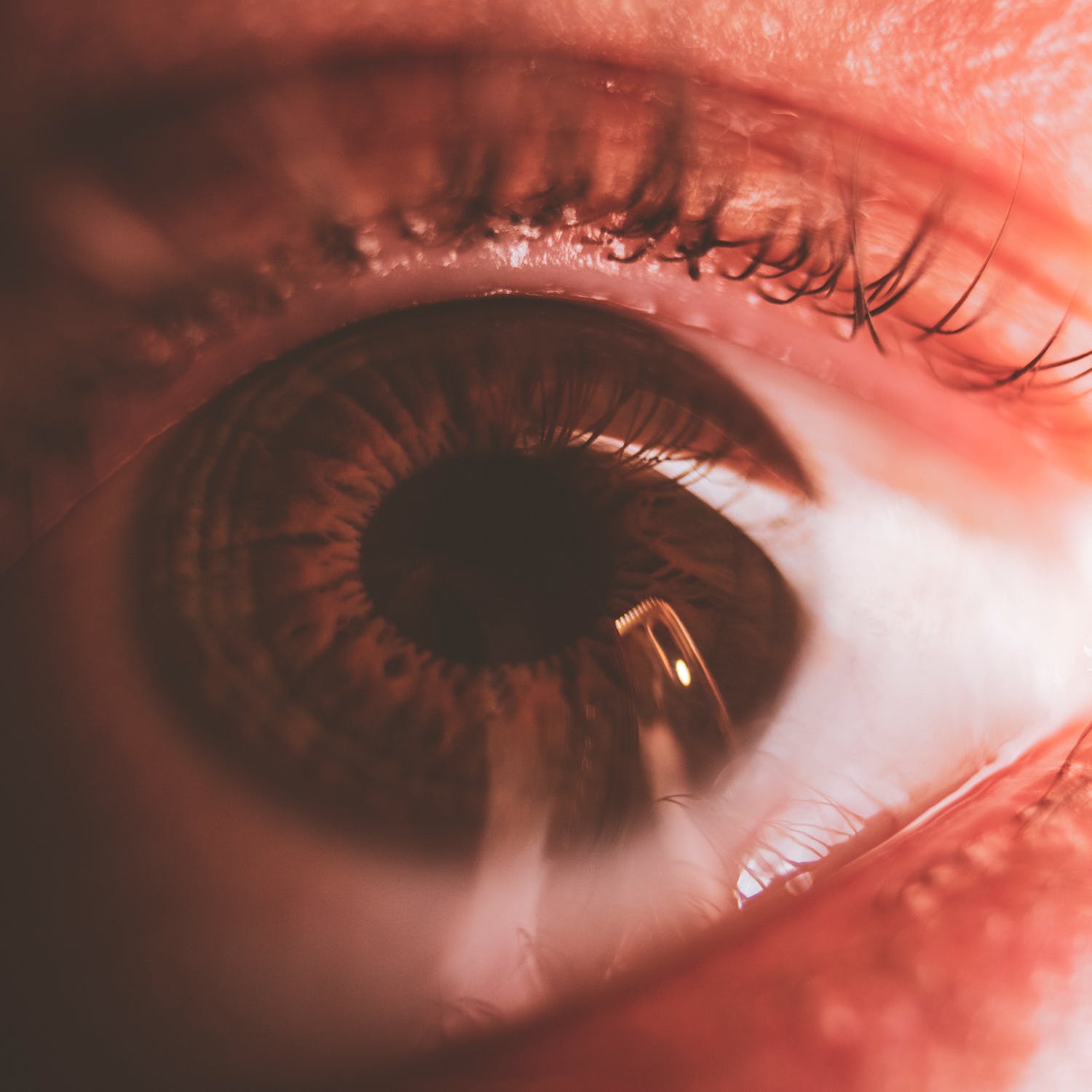Can You Get Chlamydia In The Eye?

Content by

Last Updated
Buy Antibiotic Treatment for Chlamydia online from £8.49
Delivered the next day in plain and discreet packaging
Table of Contents
- What Causes Chlamydia In The Eye?
- How Do You Catch Chlamydia Eye Infection?
- What Are The Symptoms of Chlamydia in The Eye?
- What Does Eye Chlamydia Infection Look Like
- Diagnosis and Treatment
- Will The Infection Go Away By Itself?
- Is Chlamydia in The Eye Contagious?
- Chlamydia Eye Infections in Newborns and Babies
- How To Avoid Getting it
Chlamydia is a common sexually transmitted infection (STI), affecting both men and women. According to the NHS, it is most common in sexually active young adults under the age of 25. Chlamydia is passed on through unprotected sex or contact with infected semen or vaginal fluid. Whilst it is predominantly known as a genital infection, it can affect the eyes.
In this guide, we'll take a closer look at how eye chlamydia spreads, common symptoms and how to manage and prevent eye chlamydia effectively.
What Causes Chlamydia In The Eye?
Chlamydia in the eye occurs when chlamydia trachomatis (the bacteria that causes the infection), comes in contact with the mucous membrane (the wet part of the eye). It is also known as chlamydia conjunctivitis, or ocular chlamydia. Symptoms of early-stage chlamydia eye infections can be slow to develop. However, eye chlamydia can cause irritation, pain, swelling and discharge, usually affecting one eye only. These symptoms are similar to other bacterial eye infections such as conjunctivitis, but the cause, treatments and recovery times differ.
How Do You Catch Chlamydia Eye Infection?
You can catch a chlamydia eye infection if your eyes come into direct contact with the genital fluid of an infected person. This can include:
- Semen or vaginal fluid of an infected person making direct contact with the eye
- Sharing items such as eye mascara or eye drops
- Touching or rubbing your eyes after coming into contact with an infected person (this would need to be done quickly as chlamydia trachomatis cannot survive for long outside the human body)
- Passing the infection onto your baby if you have a natural birth whilst you are infected
What Are The Symptoms of Chlamydia in The Eye?
The symptoms of eye chlamydia can be the same as other bacterial eye infections such as pink eye.
Eye chlamydia symptoms usually develop slowly. This means you may not notice symptoms during the early stages of the infection. Typically, just one eye is affected but it can affect both eyes.
The main symptoms of a chlamydia eye infection include:
- Itching or scratchy eyes
- Red eyes
- Swollen eyelids
- Light sensitivity
- Pus, tears, or watery discharge
- Eyelids crusting or sticking together
Chlamydia does not usually cause any changes to vision, or any notable pain in the affected eye. If you experience either of these, you should see your doctor or optician for an examination.
What Does Eye Chlamydia Infection Look Like
An internet search of “eye chlamydia” will display a range of pictures, displaying what looks to be a painful eye infection. The main theme is redness of the eye, that can be swollen, with visible discharge on the lower eyelid. Pictures of more severe infections show crusty eyelids that look difficult to open.
Diagnosis and Treatment
Chlamydia in the eye is diagnosed by swabbing the conjunctiva and sending the sample to be tested in a laboratory for specific bacteria.
Your doctor may also recommend that you get tested for other sexually transmitted infections or diseases. Syphilis and gonorrhoea can cause infections that can spread to the eyes.
Eye chlamydia is treated with antibiotics such as doxycycline or azithromycin. Doxycycline is the first line treatment, as it is more effective. Tablets are usually taken orally. It is important to have an accurate diagnosis, because using eye drops for standard eye infections (not caused by chlamydia) will not help and can delay the recovery timeframe.
It is important to finish any course of antibiotics that you are prescribed, to ensure the infection is completely treated. Most cases clear up within a few weeks.
Will The Infection Go Away By Itself?
If you contract chlamydia eye infection and it's left untreated, the infection is likely to go away by itself after 6-18 months. This is usually what happens in those that do not experience symptoms. However, during this time, the infection can be passed on unknowingly. If you are experiencing symptoms, it is likely that you will require a short course of antibiotics.
Untreated chlamydial infections in the eye can spread in addition and can also lead to further complications of the eye.
Is Chlamydia in The Eye Contagious?
Yes, chlamydia in the eye is contagious. Bacteria can pass through genital fluid to eye contact, or even eye to eye contact.
Chlamydia Eye Infections in Newborns and Babies
Pregnant women who are carrying chlamydia may pass it on to their newborn baby. This happens as the baby passes through the vagina during delivery.
In a newborn, chlamydia symptoms may be eye redness, eyelid swelling and watery discharge that begins when the baby is 5 to 7 days old.
Chlamydial conjunctivitis in a newborn is treated through IV antibiotics and antibiotic ointment. If untreated, it can lead to further complications, including lung infections, eye infections and even blindness.
How To Avoid Getting it
Chlamydia infections can be prevented by having protected sex with a condom and practicing good hygiene. Anyone diagnosed with chlamydia should seek treatment as soon as possible and inform recent sexual partners so that they can get a chlamydia test too.
It is recommended that pregnant women with chlamydia should receive treatment before giving birth to prevent spreading the infection to the newborn baby.
Whilst all of our content is written and reviewed by healthcare professionals, it is not intended to be substituted for or used as medical advice. If you have any questions or concerns about your health, please speak to your doctor.
